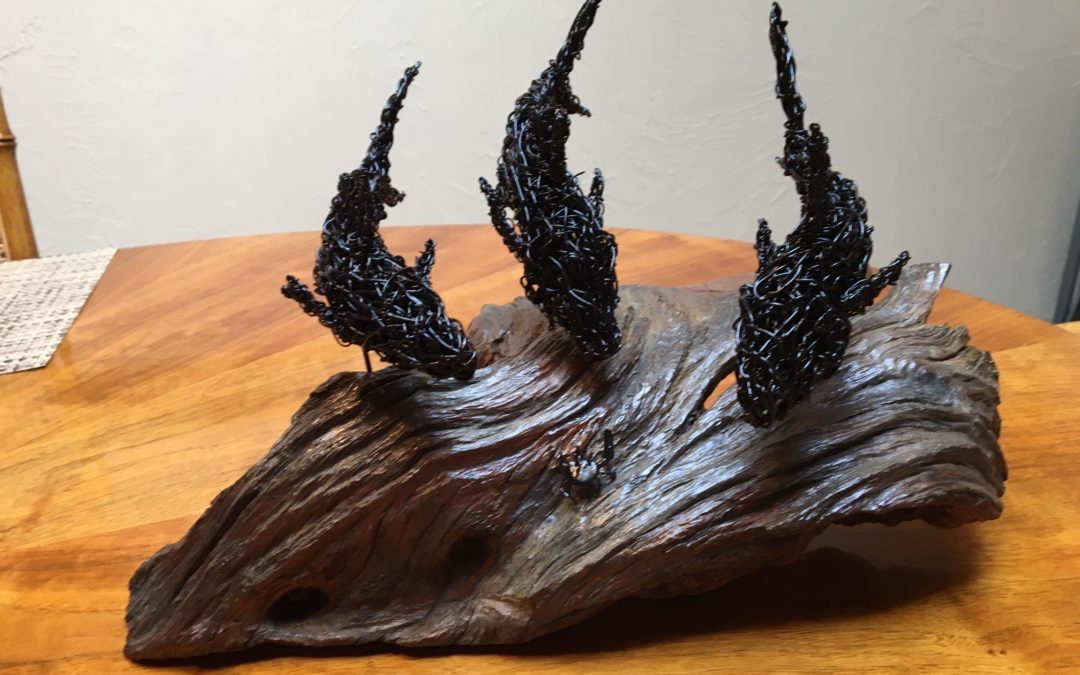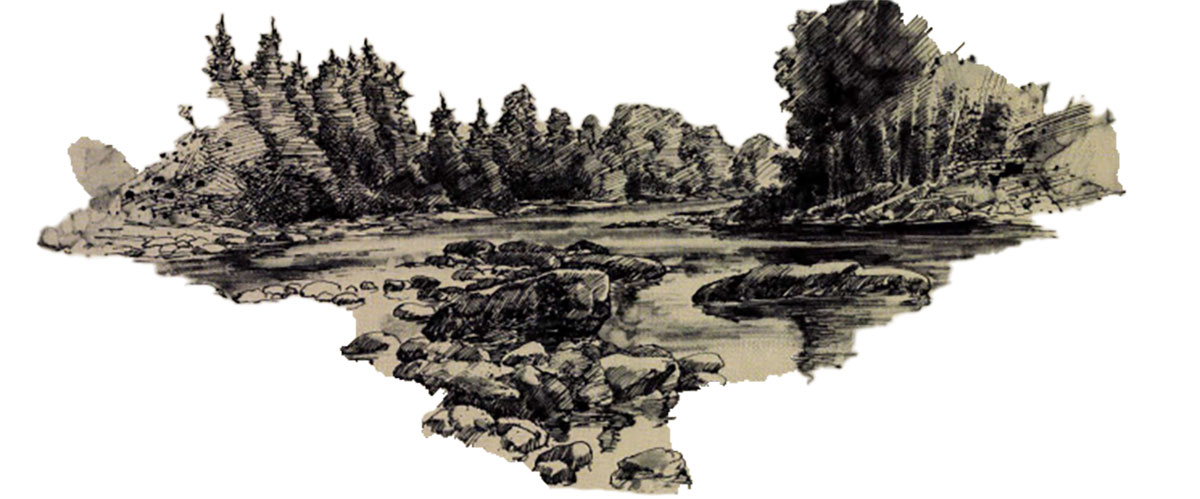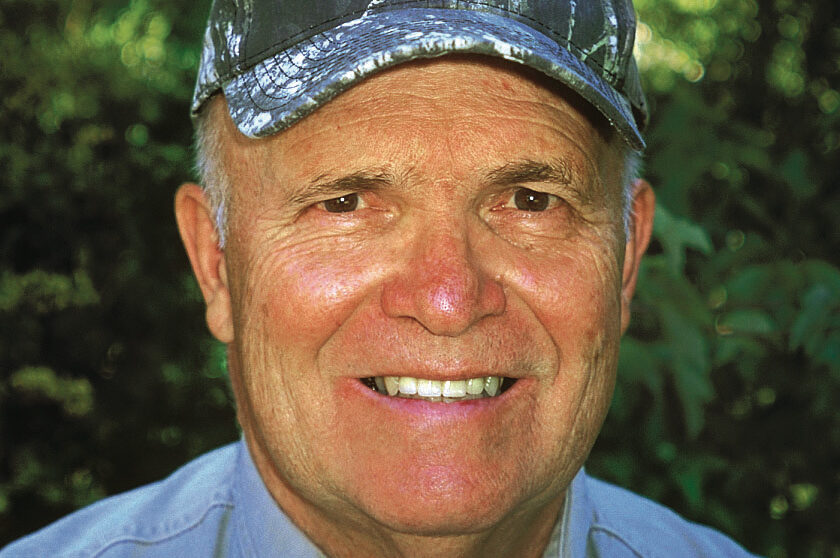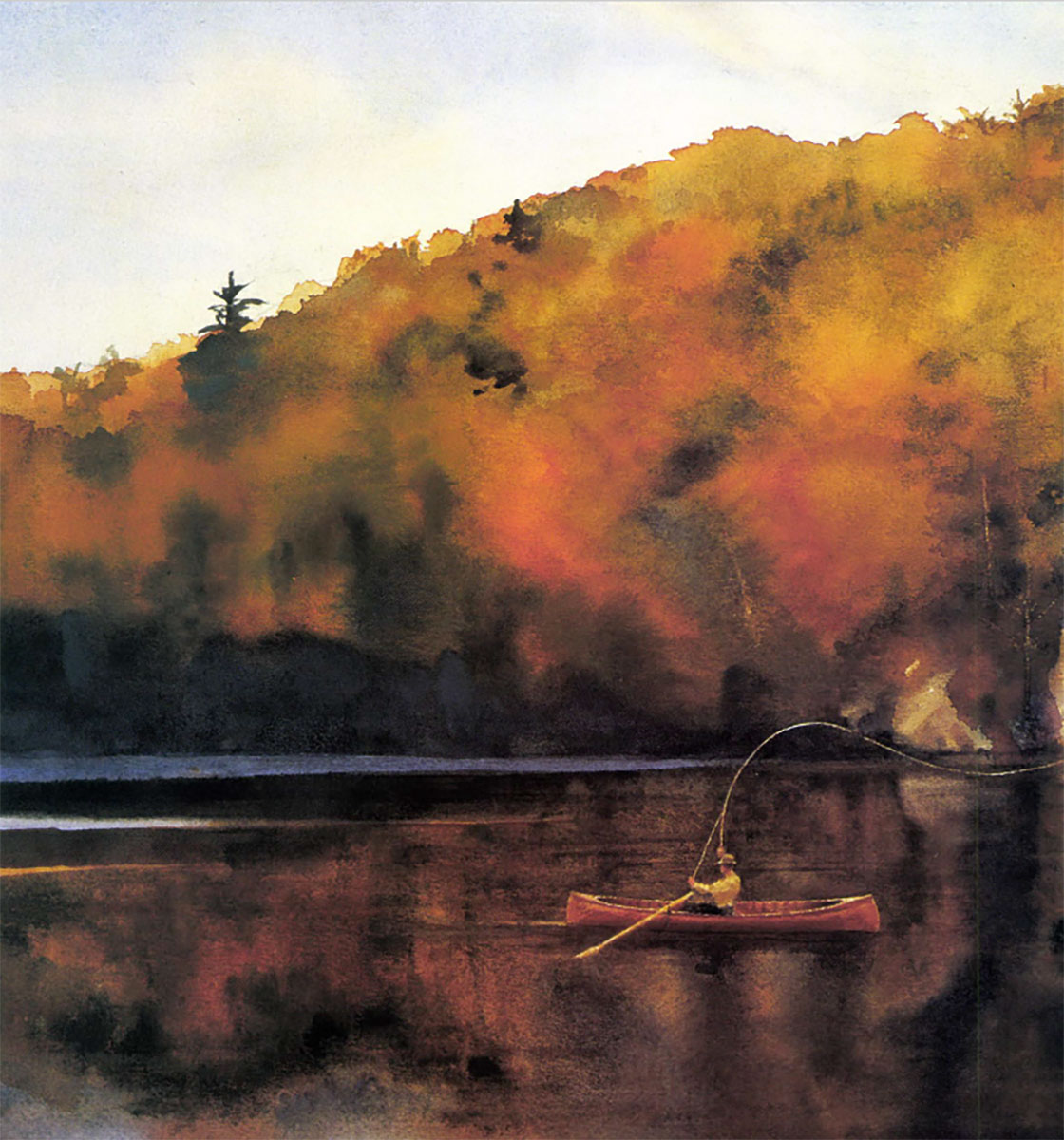I see lots of things along a striper beach around midnight on a full moon. It’s bright enough that I never need a flashlight, even to tie on a fly. Sometimes there are sand eels, silversides, butterfish, and tinker macks washed up high above the tideline. Now and again I’ll find a plug broken off, hopefully, in an epic battle with a cow bass. They usually cost between $10 and $20 each, so I pick them up and toss them in my bag. I’ll slap a new pair of trebles on ’em when I get home. On windless nights with soft seas, striped bass slurp small baits on the surface like trout sip mayflies.
Now and again I find a bird’s nest of mono all tangled up with a three-way rig and a pyramid sinker. I used to get hacked off by finding the mess that tangles up gulls and terns, but not anymore. I just pick it up, stuff it in my pocket, and think of my artwork back home.
I plead guilty to having owned a Velvet Elvis. I saw it in a flea market, and a buddy dared me to hang it on my college dorm room wall. It cost two bucks and generated more laughs than any joke I’ve ever told. But the art I think about when I find a monofilament bird’s nest is hardly of that ilk. Mine is handcrafted by a notable Florida Keys charter captain named Bob Baker.
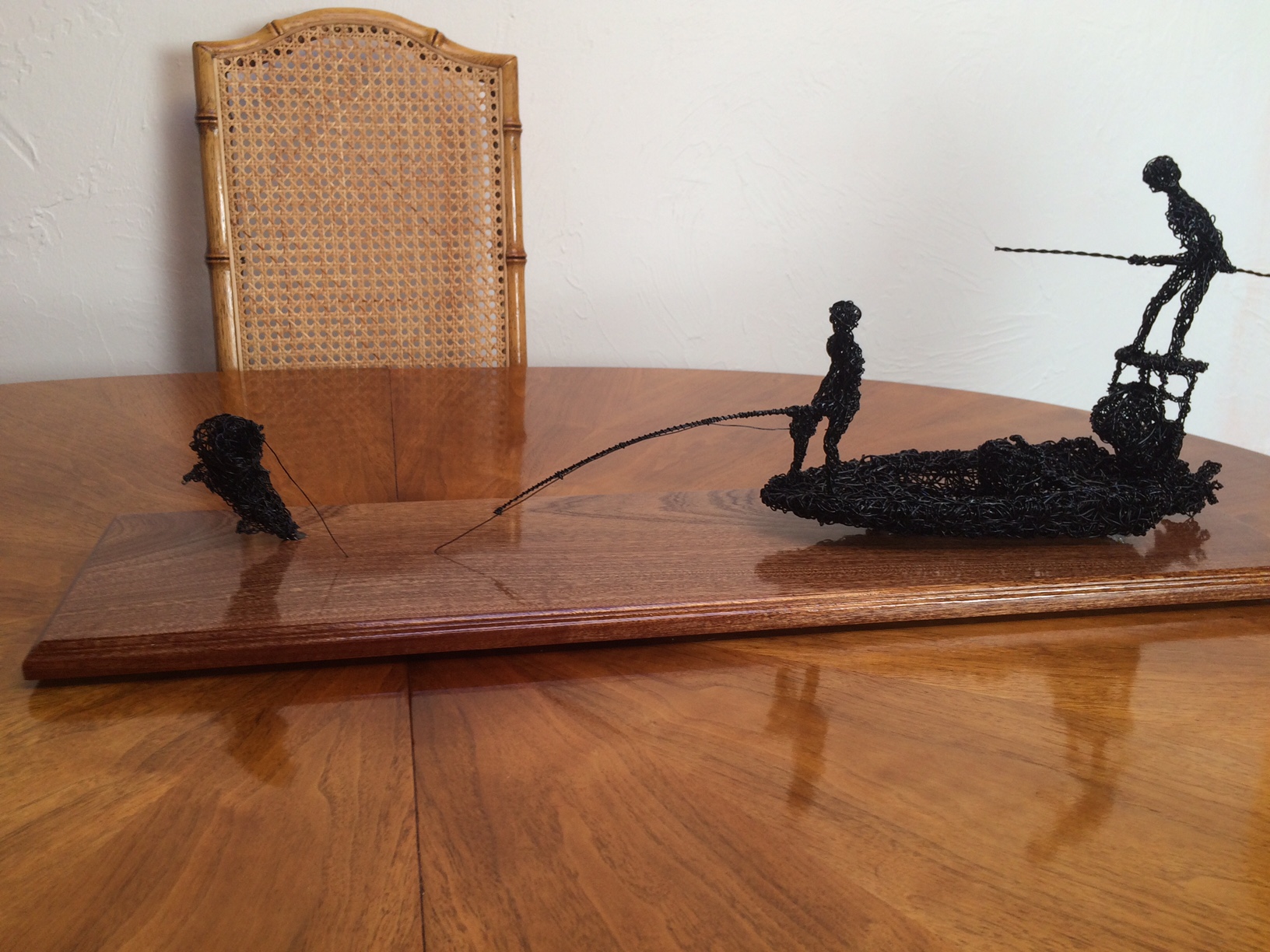
“Jumping Tarpon”
Baker was a fisherman long before he studied art at Kent State. After four years of studying oils, watercolors, and sculpture, he packed up his life and headed to Islamorada to answer his calling. He guided by day and worked on his craft at night and in the offseason.
Baker did what many of us do: he got married and raised a family. He also did what many of us dream of doing and established an offshore charter fishing operation in Costa Rica and a few in the Bahamas. These days he spends his time on the Florida flats searching for bonefish, permit, and tarpon and in the backcountry for reds, trout, and snook. And he still creates art.
As a medium, Baker settled on painstakingly unique wire sculptures that capture the essence of the sporting life. His subject matter comes from inshore and offshore fish, birds, and boats, as well as hunters and dogs. If you’ve ever seen him throw a cast net, you’d want to see that immortalized in a wire sculpture. I imagine that would be tough to do.
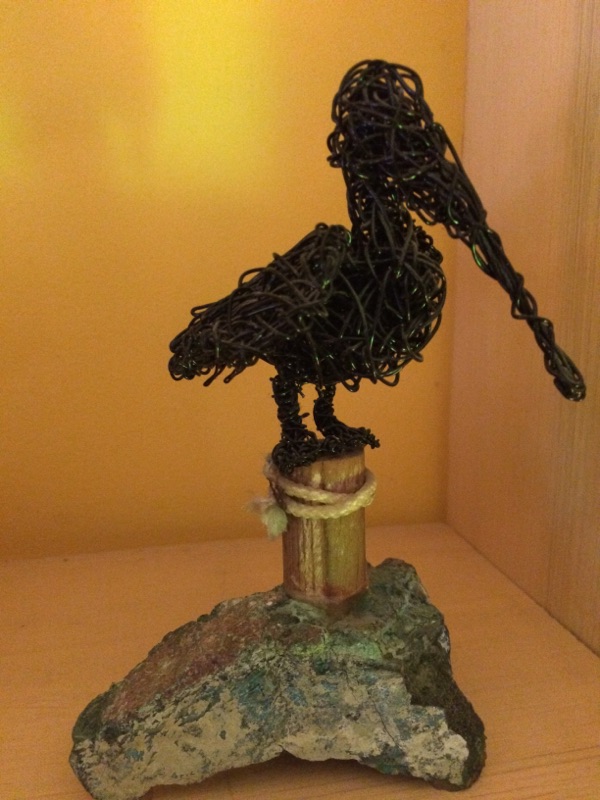
“The Pelican”
Here’s what Baker had to say about this amazing life he’s involved in:
“I started working with armature wire by accident. It was 1968, and I was a freshman fine arts student at Kent State. My final art class assignment was to create a piece of art from an alternative medium. Like most college kids, I waited until the last minute, and when I turned on my lamp to start my work, the light blew. I unplugged it, pulled out a single-edged razor blade, and cut back the rubber insulation to try and fix the darned thing. When I was done, I noticed a coil of copper wires in my lap. They were interesting, so I fiddled with them until I made a figure. I submitted it and got an “A”.
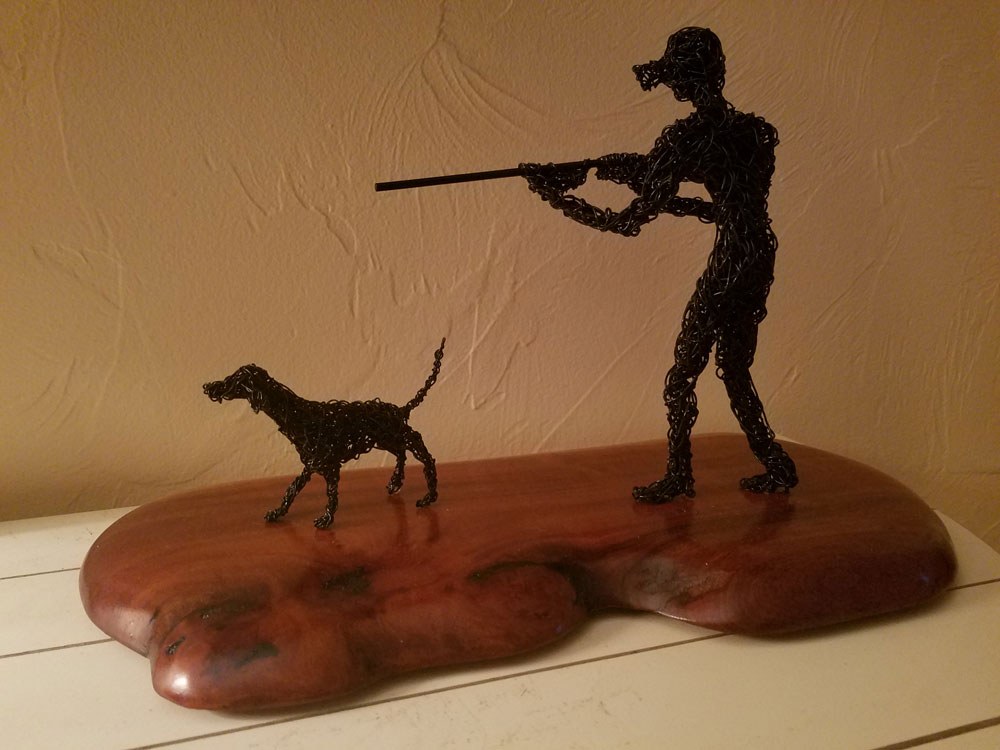
“On Point”
“I moved on to other mediums, but several years later I took my mom to an auto repair shop. We had to pick up her car, but it wasn’t ready. To kill time I walked into an armature workshop next door. Hanging from the walls were huge spools of copper armature wire in all different gauges. They reminded me of my college project, so I struck up a conversation with one of the employees, who was dumbfounded that I wanted to make wire sculptures from it. He ultimately sold me ten-pound spools of 18-, 20-, 22-, and 24-gauge wire. The rest is history. In fact, next year will be my 50th year of making sporting figures from wire.
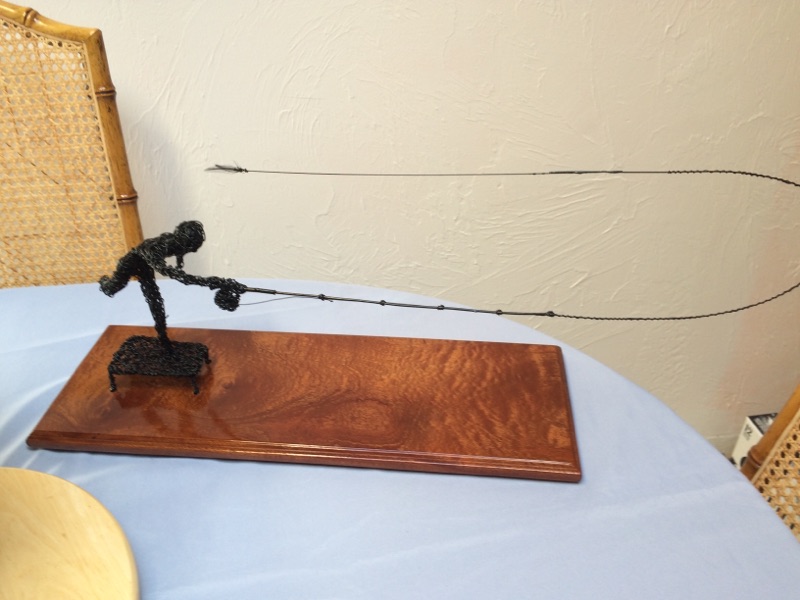
“A Tight Loop”
“Depending on their complexity, my sculptures take between two and 14 days to complete. The process is simple, but it is very time-consuming. I begin with a simple stick-figure skeleton and build from there. I leave the piece where I can study it periodically to assess what needs to be added or altered. Adding is easy, but altering requires cutting out wire and reshaping to suit.
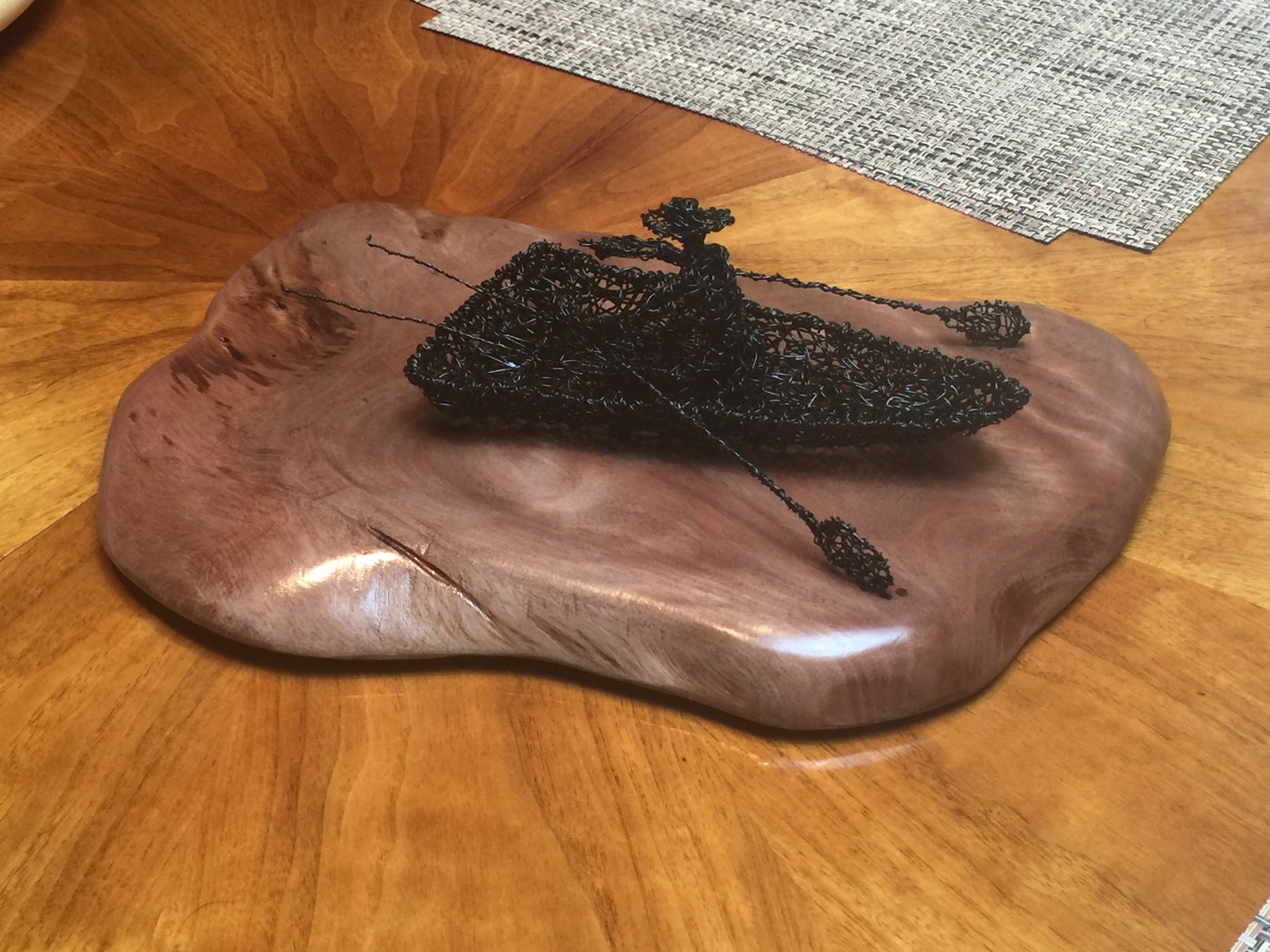
“Going Fishing”
“When I’m finished with the wire, I move on to the base. I’ll select a type of wood I feel will best match the subject and cut it to a desired shape. I like the grain and color of tamarind, Jamaican dogwood, tropical almond, red mahoe, and sea grape, all of which are local to me. I use a grinder to create a suitable form and then round the edges. I do a lot of sanding throughout the process and apply three layers of lacquer for a finish. When the base is completely dry, I’ll wax and buff it for a polished look. I then spray paint the sculpture with primer, and when it’s dry I’ll hand paint each wire with high-gloss black enamel. The high-gloss paint really brings out the details. Mounting the sculpture on the base is the final step.
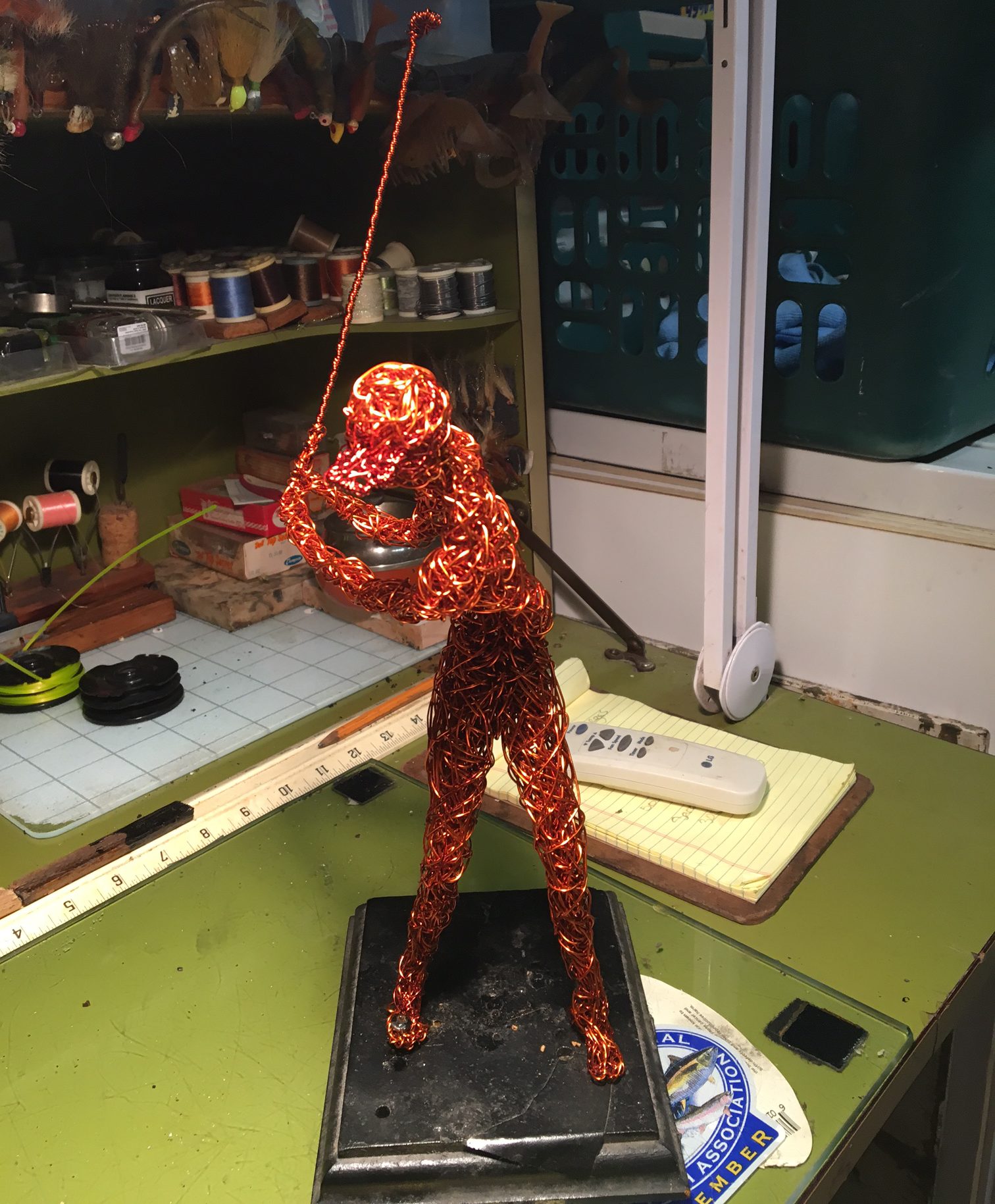
“Perfecting the Swing”
“As a full-time fishing guide, I get a lot of inspiration from my time on the water. Sometimes I’ll focus on fish; other times I’ll capture memorable clients fighting and landing jumping tarpon or casting to tailing bonefish. If I’m not booked for a charter, you’ll likely find me in my studio doing what I love to do: thinking about the sporting life and creating art to capture the experience.”
Great art touches the soul. For more information, contact Capt. Bob Baker at captainbobbaker.com.

